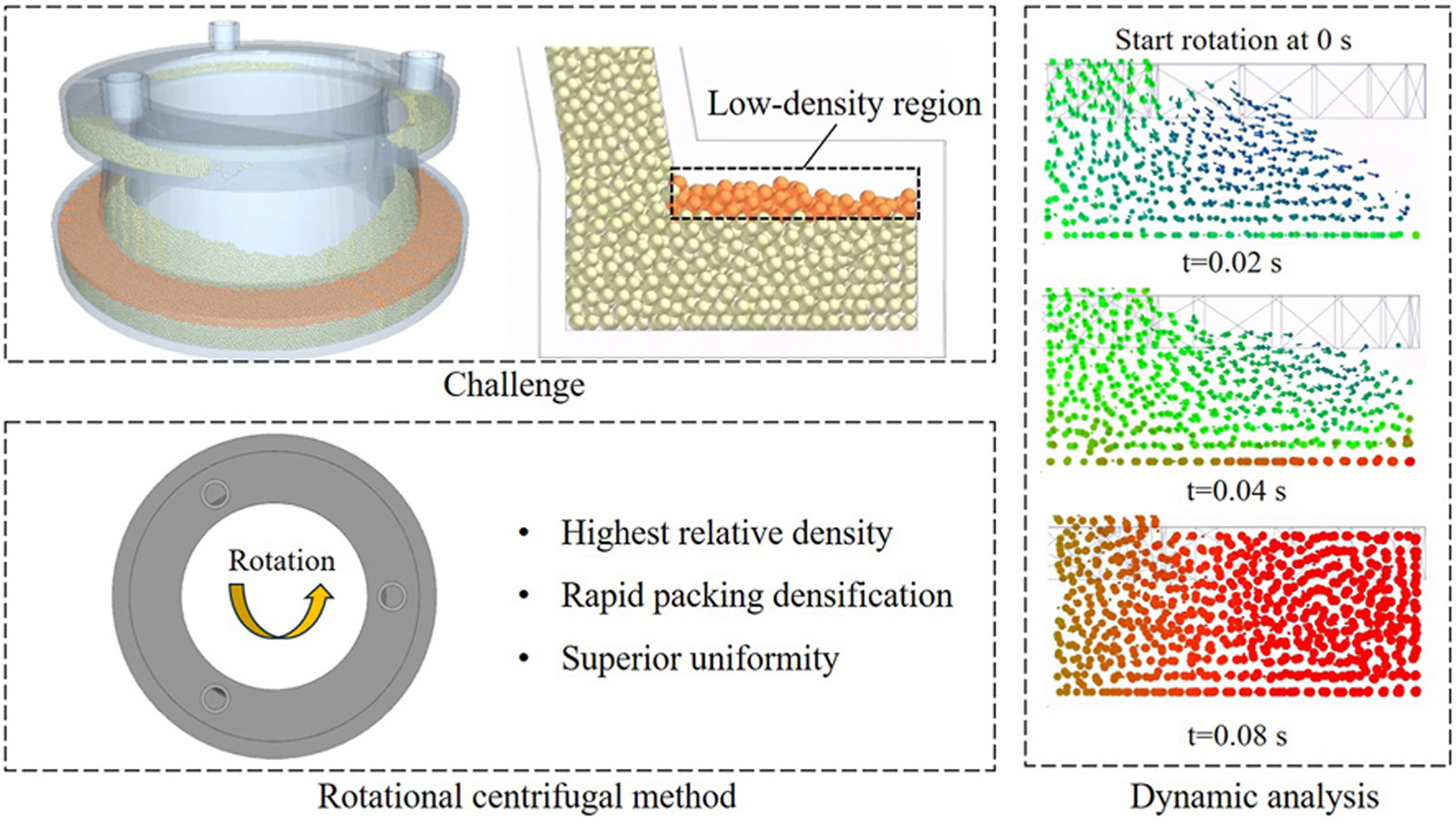• Rotational centrifugal method effectively addresses low-density regions in a complex HIP capsule.
• DEM simulations revealed particle motion and void elimination mechanisms.
• Systematic comparison of three dynamic packing densification techniques for Ti-6Al-4V powders.
Hot isostatic pressing (HIP) is a critical powder metallurgy technique for manufacturing high-performance components. However, achieving uniform powder distribution within complex capsules is challenging, particularly in critical low-density regions where inadequate powder filling leads to non-uniform deformation and potential part rejection after HIP. This study investigated the powder filling and packing densification behavior of Ti-6Al-4V particles through discrete element method (DEM) simulations to develop an enhanced densification technique targeting these critical regions. A new rotational centrifugal method was proposed to address this challenge. Results demonstrated that vertical vibration achieved limited improvement, and horizontal vibration exhibited non-uniform powder distribution. The proposed rotational centrifugal method at 200 rpm proved most effective, achieving the highest relative density with superior uniformity and rapid densification. The analysis in rotational motion revealed that rapid densification originates from consistent centrifugal forces. Upon stopping rotation, particles undergo localized vigorous motion, resulting in a slight decrease in relative density. To address this, an optimized deceleration scheme was developed. It achieved a relative density of 0.549, representing improvements of 70.5 % over vertical vibration and 4.2 % over horizontal vibration. These findings provide valuable insights for optimizing pre-HIP processing parameters for complex components, offering a promising solution for addressing powder filling challenges.

